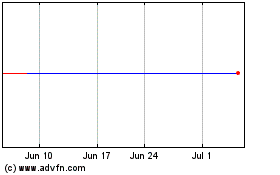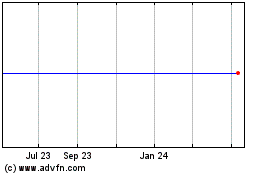In a ballroom at the Four Seasons hotel in Hong Kong last month,
some 300 potential investors gathered to size up Japan's most
popular smartphone messaging app ahead of its $1 billion-plus
initial public offering in New York and Tokyo.
Line Corp.'s top executives made their sales pitch, armed with
data showing revenue growth and plans to expand its advertising
business, according to people who attended the roadshow.
Investors asked the executives about user-growth prospects,
acquisitions and the chances of re-entering China, where censors
block Line and some other foreign social networks.
But Line's Chief Executive, Takeshi Idezawa, speaking to global
investors in Japanese through an interpreter, kept the focus on
plans for the five-year-old app to earn more revenue in Japan,
where it is already dominant, the people said.
"It made me wonder whether the management has what it takes to
build a regional business across Asia," said Tony Chu, a portfolio
manager at U.S. asset-management firm RS Investments, who attended
the meeting.
As Line prepares to make its debut in New York on Thursday and
Tokyo on Friday, after raising $1.14 billion in the technology
industry's biggest IPO so far this year, some investors are
questioning whether the company—valued about $6.6 billion—can
expand beyond its core markets and contend with larger rivals in
the U.S. and China.
Tokyo-based Line, owned by South Korean internet giant Naver
Corp., is grappling with slowing user growth and annual losses,
while trying to earn more money from content it has introduced to
transform itself from a simple chat app into an all-in-one
smartphone portal.
Created in 2011 as a free communication app, Line quickly gained
popularity thanks to the cutesy digital stickers users can send to
convey various emotions. Some stickers are free, while others cost
up to nearly $6.
But its monthly active user count of 218 million has been
plateauing in recent quarters, and the company hasn't been able to
significantly expand beyond Japan, Taiwan, Thailand and Indonesia,
which collectively account for two-thirds of its users. While
revenue grew to more than ¥ 120 billion ($1.15 billion) last year
from about ¥ 40 billion in 2013, it has posted net losses in two of
the past three years, and has a debt load of ¥ 104.6 billion.
Analysts and fund managers say investors will likely want shares
of the company while technology IPO markets are in the doldrums,
but whether or not the hype lasts will depend on Line's ability to
sustain growth.
"I expect initial popularity, but unless the company creates new
pillars of revenue in the next year or two, share prices could be
dragged down," said Masayuki Kubota, chief strategist at Rakuten
Securities Economic Research Institute.
To diversify, Line has been adding functions including
taxi-hailing, mobile payments, and music and video streaming,
though many of the features have yet to gain significant traction.
Facing more experienced competitors, it has had to close some of
its features, such as Line Mall, an e-commerce service it launched
in 2013.
So far, Line has had limited success in making money outside of
its home country, which accounts for about 70% of the company's
revenue, most of which is derived from games, sales of digital
stickers and advertisements.
"Our current business and future growth could be materially and
adversely affected if we experience a decline in users or user
engagement in Japan," Line noted in its IPO prospectus filed to the
U.S. Securities and Exchange Commission.
The company declined to comment beyond what it said in its
filing.
Line also operates in a highly competitive environment, facing
ambitious players with larger financial resources and user bases.
Facebook Inc.'s WhatsApp and Messenger apps collectively boast
nearly two billion users and have been expanding globally, while
Tencent Holdings Ltd.'s WeChat dominates the Chinese market with
762 million users. WhatsApp is widely used in 109 countries, and
Messenger in 49 countries, while Line is dominant in only four
countries, according to data from research firm SimilarWeb.
Line has said it aims to replicate the success it has had in
Japan in other markets, with a particular focus on Asia. Line is
installed on 79% of Android devices in Japan, 92% in Taiwan, 94.6%
in Thailand, and 70.8% in Indonesia, according to SimilarWeb.
Rong Lin, a 36-year-old Taipei resident working for an internet
company, said Line was ubiquitous in Taiwan, where even older
people who have never used a computer before use it to text, share
stickers, and for voice and video chat. But she said some of Line's
services, such as mobile payments, had not taken off.
In 2013, Line tried to expand in India with TV commercials, but
ultimately most smartphone users didn't switch to Line.
"Most of my friends are using WhatsApp," said Abhinav Bansal, a
23-year-old graduate student in Mumbai.
To create new sources of revenue, Line this year plans to launch
a low-cost mobile carrier in Japan, using the wireless networks of
NTT DoCoMo Inc. But Japan's wireless market is already saturated
with cheap mobile options. It has beefed up its advertisement
services, but user growth will be key in drawing potential
clients.
Some analysts said listing in the U.S. could boost Line's brand
overseas.
"Whether it can use its IPO to increase penetration in overseas
markets will impact its future share performance," said Tomoichiro
Kubota, a senior market analyst at Matsui Securities Co.
Line will begin trading 22 million new shares in New York on
Thursday and 13 million shares in Tokyo on Friday after pricing its
IPO at the top end of its range. Line first submitted an
application to list on the Tokyo Stock Exchange in 2014, but
postponed the offering, and then scrapped plans to list in
2015.
Naver, Line's parent company, will retain more than 80% of
Line's shares after the IPO, enabling the South Korean company to
continue to have control.
Write to Alexander Martin at alexander.martin@wsj.com and Juro
Osawa at juro.osawa@wsj.com
(END) Dow Jones Newswires
July 13, 2016 08:25 ET (12:25 GMT)
Copyright (c) 2016 Dow Jones & Company, Inc.
Ntt Docomo (NYSE:DCM)
Historical Stock Chart
From Nov 2024 to Dec 2024

Ntt Docomo (NYSE:DCM)
Historical Stock Chart
From Dec 2023 to Dec 2024
